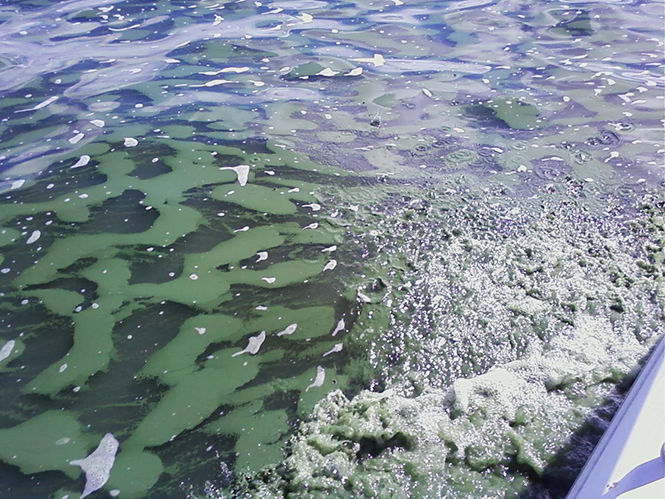Plans to combat Lake Erie’s toxic algae blooms in motion
February 8, 2015
A team of Kent State researchers have started making progress toward the removal of toxic algae blooms in Lake Erie.
More than 500,000 Toledo, Ohio, residents were left without safe drinking water due to the algae blooms in August 2014, according to the Toledo Blade. This matter gained the attention of scientists who are now working to fight the problem and prevent similar future incidents.
“The first directive was to deal with finding strategies to deal with the algae bloom problem,” said Kelly Turner, the principal investigator of the social analysis project. “The second level was to address these problem domains.”
Scientists said they are approaching this algae problem from two perspectives. One part is analyzing the algae blooms, mapping their growth patterns and finding ways to eliminate the algae by preventing its nutrients, phosphorus and nitrogen, from reaching the lake. The other part is concerned with finding ways to implement social policy to stop such large amounts of algae from showing up in Lake Erie again.
The Geology, Geography, Biological Sciences and Health Policy and Management departments of Kent State are working to solve the problem.
Geology professor Joseph Ortiz and associate professor of biological sciences Darren Bade are a part of the project dealing with the removal of the algae.
Ortiz said he is working on satellite mapping of the algae spreads, while Bade is working on ways to understand the algal blooms and how to prevent them from spreading again.
Ortiz and Bade have found that there are two forms of toxic algae growing in the lake, being Planktothrix and Microcystin. Both are known to survive off of phosphorus, which is caused by runoffs from farms and other dumping, Ortiz said.
Scientists such as John Hoornbeek, from the Department of Health Policy and Management, and Turner are looking at ways to implement new social policies concerning with how wastewater is put into the lake, such as through farm runoff.
“We were a part of a consortium… to have Kent State’s water expertise become a part of a statewide effort supported by Ohio Board of Regents (OBOR) to deal with the harmful algal bloom problems in Lake Erie,” Hoornbeek said. “We are playing a supportive role in that effort. Our role in that effort will be to try and understand that.”
The team has met in November 2014 and was approved for OBOR grant money in December. They expect to begin their work in July 2015 with hopes to conclude their project in January 2017, Turner said. The team
Hoornbeeck said the team plans to one day create policies and effective strategies to prevent future problems in not only Lake Erie, but also the rest of the country.
Contact Jacob Runnels at [email protected].












